
The Quran, a timeless guide, employs intricate stop signs that guide recitation, preserving profound meanings and maintaining eloquence. Recognizing and respecting these signs ensures accurate recitation. These symbols enable a reflective engagement with the Sacred Text as revealed to Prophet Muhammad (PBUH).
Rules for Reading the Quran: Your Journey to Spiritual Enlightenment
Unlock the Beauty of Quranic Recitation: Mastering Tajweed Rules
The Obligatory Quran Stop Signs (الْوَقْفُ الَّازِم)
Marked by the symbol (مـ), these signs necessitate an obligatory halt in recitation. Not adhering to this halt might distort the essence and divine intent of the verses. Observance of this mandatory stop is crucial for maintaining the sanctity and true interpretation of the divine message.
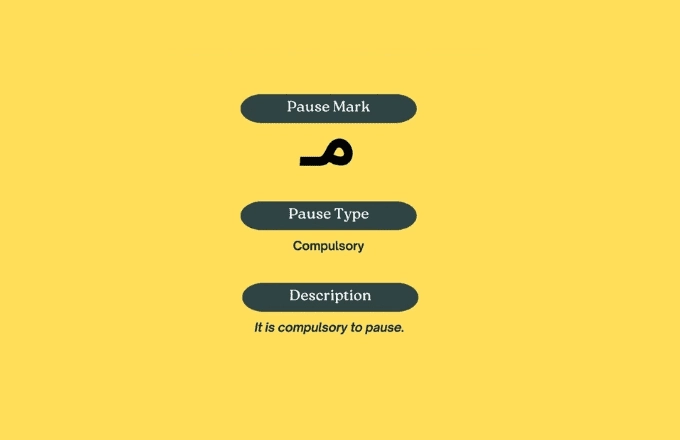
Quran Tajweed: The Best Guide to Beautiful Quranic Recitation
The Permissible Quran Stop Signs (الْوَقْفُ الْجَائِز)
Represented by the symbol (ج), this sign implies a discretionary Quran stops that does not alter the essence of the verse. It accommodates the reciter, offering a breather during recitation and ensuring fluidity and grace in the delivery of the divine words.
The Possible Quran Stop Signs (الْوَقْفُ الْحَسَن)
Including symbols like Preferred Breaks (قلی) and Licensed Pause (ص), these denote preferable pauses, serving as gentle suggestions rather than imperatives, facilitating an eloquent flow and accurate rendition of meaning without imposing any obligatory halts.
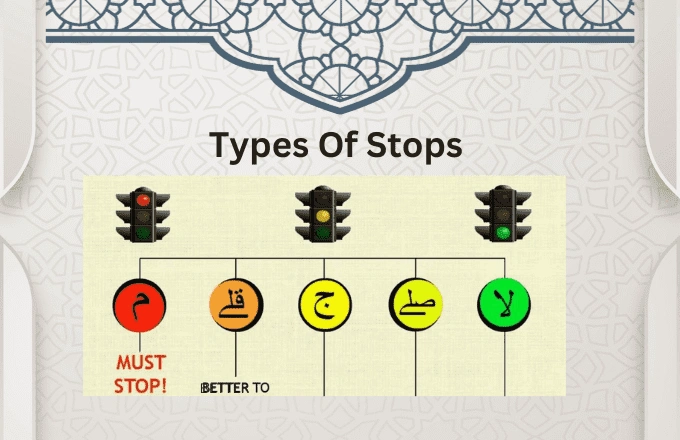
The Preferable Quran Stop Signs (الوَقْفُ الْكَافِي)
Symbols like Preference for Continuation (صلی) and the Embracing Stop (∴) fall under this category. They are provided to enrich the recitational experience, allowing for smoother transitions between closely related statements enhancing comprehension and reflection.
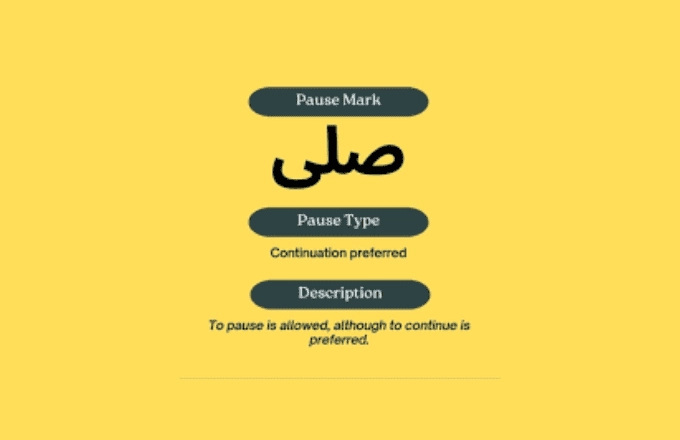
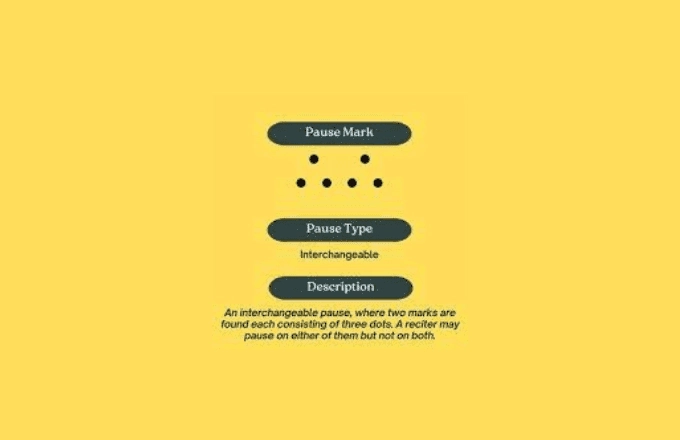
The Pauses Intimately Tied to Subsequent Stops (الْوَقْفُ الْمُتَقَدِمَيْن)
This involves calculated pauses, where the meaning is intrinsically linked with the subsequent symbols. A profound understanding of the subsequent stop is pivotal to preserving the divine essence and intricate wisdom embedded within the verses.
The Prohibited Stop (الوَقْفُ الْمَمْنُوع)
Symbolized by (لا), Quran stop rules here is strictly discouraged as it can lead to misinterpretation and alteration of the divine message. Continuation to the next suitable stop is imperative to ensure the unadulterated conveyance of divine wisdom.
Join the Tajweed Quran Course Online at the Qari.Live the Best Online Quran Academy.
Specialized Signs (Quran Stopping Rules)
Continue Reading (ز)
This encourages the seamless continuation of recitation, enhancing the fluidity and rhythm of divine discourse.
The Anticipation Mark (قف)
This mark represents a pause filled with anticipation and deep reflection on the impending divine revelation.
The Longer Pause (وقفتہ)
Denoting an extended pause grants the reciter ample time for deeper reflection and contemplation on the divine words.
The Pause of Prophet (PBUH) (وقف النبی)
It represents the specific points where Prophet Muhammad (PBUH) chose to pause during his revered recitation, offering a glimpse into his divine interaction with the Quran.
The Sign of Supplication (وقف غفران)
This symbol designates spots for supplications and seeking divine forgiveness, facilitating spiritual connectivity and humility before the Almighty.
The Pause Sign of Jibrael A.S (وقف منزل)
This symbol indicates the revered pauses made by Angel Jibreel (AS) while conveying the divine revelations to Prophet Muhammad (PBUH).
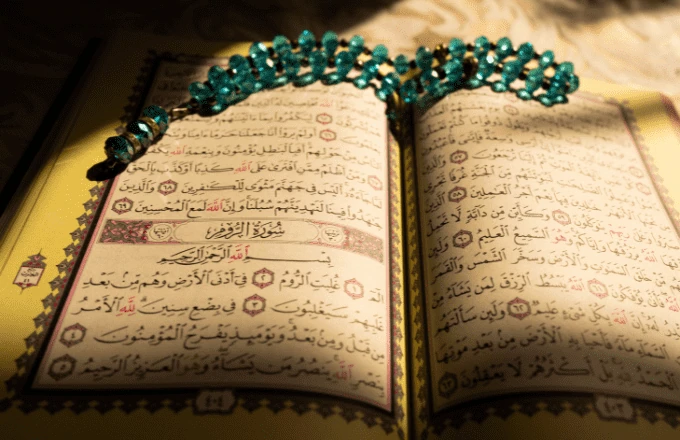
Unlocking the Significance of ‘Harakat’ in Arabic: A Comprehensive Guide
Conclusion
Mastering Quran-stopping rules is vital for precise recitation. Each sign serves a purpose, guiding pauses and continuity. Honoring them fosters a profound connection with the Quran, offering spiritual enlightenment and divine grace through mindful recitation.
Letters of Qalqalah The Best Resounding Echo of Arabic Phonetics
Frequently Ask Questions (FAQs)
What is the significance of stop signs in the recitation of the Holy Quran?
The Quran’s stop signs play a vital role, directing reciters when to pause, stop, or proceed, ensuring the accurate preservation of profound meanings in its verses. These signs uphold the Quran’s divine rhythm, preventing any distortions or alterations in its messages.
Are there any mandatory stop signs in the Quran?
Yes, there are obligatory stop signs, denoted by the symbol (مـ), known as الْوَقْفُ الَّازِم, where the reciter must stop. Ignoring these stops can result in a distortion of the intended meanings and essence of the verses.
What is the difference between the Permissible Quran Stop Signs and the Possible Quran Stop Signs?
Permissible Quran Stop Signs (marked by ج) offer an optional pause for breath without altering the verse’s essence. Possible Quran Stop Signs, like Preferred Breaks (قلی) and Licensed Pause (ص), suggest pauses when suitable, maintaining the verse’s intended meaning.
Is it allowed to stop at any point in the Quranic verses?
Avoid stopping within Quranic verses, especially at Prohibited Stops marked by (لا). Halting here is strongly discouraged as it may distort the divine message. Continue reading to the next suitable stop for the proper conveyance of divine wisdom.
Are there any specialized signs in the Quran, and what do they signify?
The Quran signs feature various specialized signs, like the Silence Symbol (س), promoting reflection; the Absolute Pause (ط), demanding respect; and the Anticipation Mark (قف), encouraging contemplation before divine revelation. These signs enhance spiritual connection and deepen understanding.







